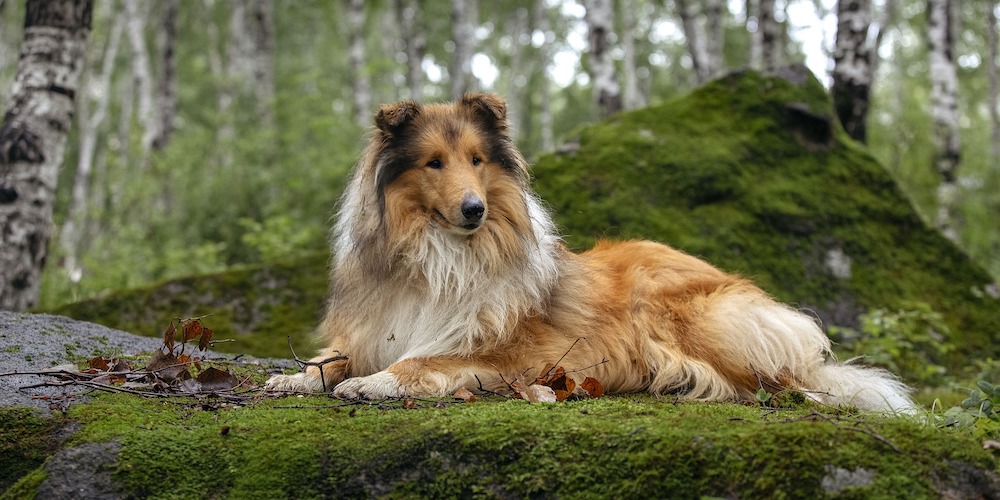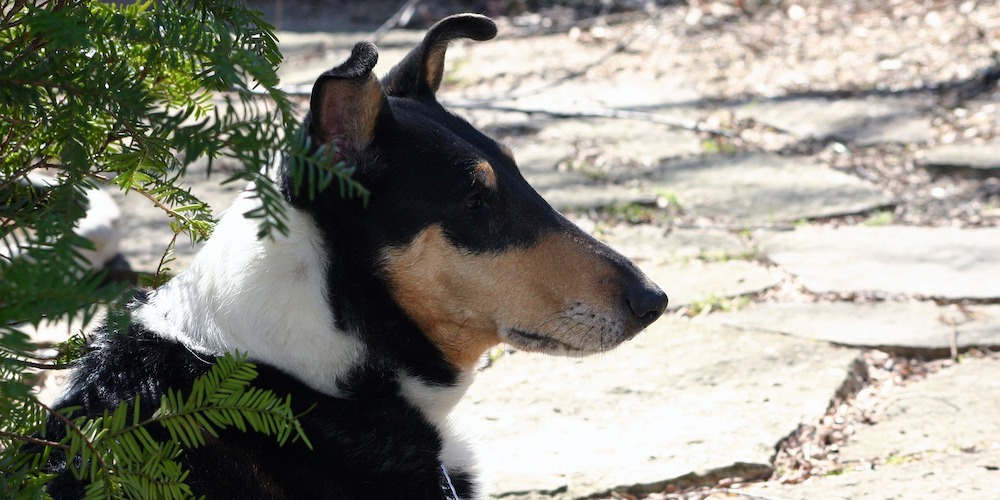The Collie originated in the Highland regions of Scotland and down to Northern England, where they were used as herding dogs.
They were first exhibited in 1860 at a dog show in Birmingham, England. However, it wasn’t until Queen Victoria visited her Scotland Estate in the 1860’s and fell in love with this breed, that they became popular with the wealthy upper class. In 1879, the first Collie was imported to the United States.
The Collie became a household breed in the 1950s with the television series Lassie.

This breed is sweet, friendly and gentle, however it is their intelligence and loyalty that makes them standout. The Collie is fond of kids and plays well with other pets, making them the perfect family dog.
Early socialisation is key for this breed to grow up as a well-rounded dog. Collies respond well to training, and with their high level of intelligence they learn tricks quickly. They are prone to barking when bored and can nip due to their herding heritage, so training is important.
The Collie has two appearances: the Rough Collie with a thick, long coat and the Smooth Collie with a short, dense coat. This medium-sized breed is known for its elegant look with a narrow, chiselled head and thick coat.
They come in a range of colours, however they often have white under the belly and chest, over the shoulders, and on parts of the face and legs. The most common patterns include sable, black and white, black and tan and tricolour.
Collies are generally healthy, however, they’re prone to some health conditions such as dermatomyositis, nasal solar dermatitis, Collie eye anomaly, progressive retinal atrophy (PRA), nodular granulomatous episclerokeratitis (NGE), hip dysplasia, elbow dysplasia, hypothyroidism, von Willebrand’s disease, allergies and drug sensitivities.

Both the Rough Collie and the Smooth Collie require weekly brushing to reduce shedding. General grooming such as bathing (every 6-8 weeks), trimming nails (every 4 weeks) and brushing teeth (every 2 weeks) will help keep your Collie healthy.
In addition, they need daily exercise and are prone to barking excessively if left alone for too long.
| Size | Medium-sized |
| Weight | 22kg – 32kg |
| Coat | Medium to long |
| Colour | Sable, tricolour (black with white & tan markings), blue merle (silvery blue and black) & white with markings |
| Lifespan | 10 – 14 years |
| Temperament | Intelligent, Gentle and Loyal |